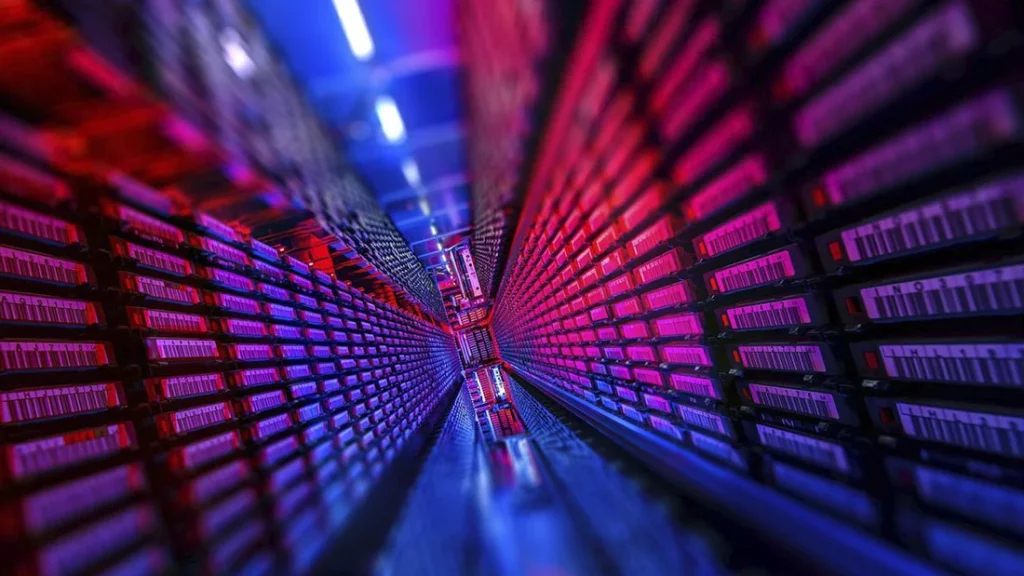In recent years, the world has witnessed an explosion in AI (artificial intelligence) investments, especially within manufacturing sectors. From smart factories to predictive maintenance and autonomous robotics, AI promises to revolutionize the way we produce goods, reduce costs, and increase productivity. However, a hidden economic alarm is starting to sound: electricity demand in manufacturing is rising rapidly, a trend that doesn’t align with the anticipated productivity gains. Rather than being a symbol of progress, this surge in energy consumption is increasingly seen as a sign of potential economic stagnation—a “hidden recession.”
In this article, we’ll explore why rising electricity demand in AI-driven manufacturing is becoming a troubling signal for the economy. We will decode the productivity paradox, analyze the implications of increased energy usage, and uncover why AI’s promise of efficiency may not be delivering the expected economic benefits.
The AI Investment Boom: A Double-Edged Sword
AI has quickly become the centerpiece of technological investment in almost every industry. From manufacturing giants to startups, the application of AI is widespread, ranging from automated assembly lines to advanced machine learning algorithms that predict supply chain disruptions or forecast maintenance needs. On the surface, these developments seem to suggest a new era of productivity, where AI solves long-standing inefficiencies and pushes industries toward unparalleled growth.
1. The Promise of AI in Manufacturing
AI technologies like machine learning, robotics, and the Internet of Things (IoT) are transforming factories across the globe. Manufacturing plants are automating previously manual tasks, improving product quality, and reducing downtime with AI-driven systems. Predictive maintenance, for example, allows machines to predict failures before they occur, saving time and money. The idea is simple: AI should increase efficiency and lower operational costs.
2. The Global Investment Surge
In line with AI’s anticipated productivity revolution, governments and corporations worldwide are investing heavily in AI. Companies like Siemens, Tesla, and GE are embedding AI into every part of their operations, promising that the future of manufacturing will be faster, smarter, and more sustainable. Additionally, governments in countries like China and the U.S. are fueling the development of AI with funding and favorable policies.
While these advancements are real, the economic impact of this AI revolution is more complex than it appears. Despite the heavy investments, AI-driven productivity growth has been sluggish. The most striking indicator of this slowdown is energy consumption.
The Productivity Paradox: Why AI Doesn’t Always Boost Economic Output
The productivity paradox is a well-known phenomenon in economics, where the widespread adoption of technology doesn’t always lead to expected increases in overall economic productivity. The term was first coined during the IT boom in the 1990s, when businesses and governments invested heavily in computers and software, only to find that productivity didn’t increase at the rates anticipated.
1. AI and Energy Consumption: An Unexpected Correlation
As AI technologies become more integrated into manufacturing, one of the unexpected consequences is the rise in energy consumption. AI systems, particularly those that rely on deep learning, require substantial computing power. This, in turn, demands a lot of electricity—both to run the machines and to power the large data centers used for processing vast amounts of data.
Even when AI automates tasks that previously required human labor, the energy demands for running AI algorithms are sometimes greater than the energy savings that automation might produce. This paradox—more tech, more energy consumption without proportional productivity gains—creates a troubling scenario for manufacturers and economies alike.
2. How Does AI Drive Higher Energy Usage?
AI is inherently energy-intensive. Training deep learning models, for instance, requires running billions of data points through high-powered computational systems. The larger and more sophisticated the AI model, the more energy it consumes. Additionally, the proliferation of cloud computing and data storage centers to support AI operations further exacerbates electricity demand.
Manufacturers adopting AI-driven automation technologies may see increased productivity in specific processes, but this can be offset by higher electricity bills due to the energy-intensive nature of the AI systems.
Electricity Demand as a Hidden Recession Indicator
In traditional economic theory, rising energy demand is often seen as a sign of industrial growth and economic expansion. However, in the context of AI-driven manufacturing, this increased electricity demand might actually signal a deeper issue.
1. The Link Between Energy Consumption and Economic Health
Electricity demand is often a reliable indicator of economic activity. When industries are booming, they require more energy to fuel production. However, in the case of AI adoption, increased electricity usage does not always correlate with robust economic growth.
As manufacturing sectors invest in AI technologies, their energy consumption increases—but the anticipated increases in productivity don’t always materialize. This discrepancy creates a troubling economic paradox: The sector is consuming more energy without generating proportional increases in economic output. This could signal that, despite the promise of technological progress, the economy may be facing underlying inefficiencies and stagnation.
2. The Mismatch: More Energy, Less Output
Manufacturers are investing heavily in AI, but this investment is not always yielding the expected results in terms of cost reductions or productivity improvements. The paradox becomes evident when you compare the rise in energy usage with the relatively modest economic returns.
For example, some manufacturers may implement AI to optimize their supply chains or automate assembly lines, expecting that it will lead to higher productivity. However, the increased complexity of AI systems and the maintenance costs associated with running AI-driven processes often outweigh the expected benefits. The hidden costs—such as energy consumption, software updates, and the need for highly skilled workers to manage AI systems—can reduce the overall economic benefits.
3. Energy-Intensive AI Systems as a Hidden Recession Signal
Higher energy demand, when not matched by corresponding productivity increases, may be signaling economic inefficiencies. As energy consumption grows without substantial gains in economic output, it could point to a hidden recession—an economic slowdown that is not immediately visible in traditional indicators like GDP growth but is reflected in rising costs, especially energy.
This phenomenon can be seen as a warning sign that the broader economy might be suffering from stagnation, even though technological investments are booming. In essence, AI’s energy footprint could be masking the underlying weaknesses of the economy.

AI: The Overestimated Miracle?
AI has been widely praised for its potential to transform industries, but as the productivity paradox reveals, the reality is more complicated. The efficiency gains promised by AI are often overestimated, and the actual returns are often slower and less impactful than expected.
1. AI’s Complexity and Its Hidden Costs
One of the reasons AI doesn’t always live up to its potential is the complexity involved. AI systems are not just plug-and-play solutions. They require massive amounts of training data, fine-tuning, and continuous optimization. Moreover, the infrastructure needed to support AI, including cloud storage and specialized hardware, adds additional costs and energy demands.
2. The Diminishing Returns of Automation
As AI technology matures, it becomes increasingly difficult to extract significant efficiency gains from automation. Early adopters of AI in manufacturing saw dramatic improvements, but as AI systems become more widespread, the marginal gains in productivity start to diminish. The law of diminishing returns suggests that as we automate more processes, the benefits will gradually decrease over time.
3. AI and Energy Usage: A Double Whammy
AI does offer improvements in certain areas, such as reduced labor costs or faster production times. However, these gains may be offset by increased energy consumption and the complexity of managing AI systems. When energy costs rise without a corresponding improvement in output, the benefits of AI become harder to quantify.
The Road Ahead: Balancing AI, Productivity, and Energy Use
So, how can we navigate the delicate balance between AI innovation, energy consumption, and true productivity gains? Here are some potential solutions:
1. Optimizing Energy Use in AI Systems
AI technologies themselves can be part of the solution. AI-powered energy management systems could help manufacturing plants optimize energy consumption by identifying inefficiencies and automating energy-saving strategies. The key is not just investing in AI, but also ensuring that the technology itself is used to make operations more energy-efficient.
2. Rethinking Economic Metrics
Traditional metrics of productivity, such as labor output or GDP, may not fully capture the nuances of AI-driven industries. We need new measures of productivity that account for the hidden costs of AI, including energy consumption, environmental impact, and system complexity.
3. Sustainable AI Integration
The future of AI in manufacturing must also consider sustainability. As AI continues to transform industries, manufacturers need to be more mindful of the environmental impact. Transitioning to renewable energy sources and developing greener AI technologies can help reduce the negative impact of rising electricity demand.
Conclusion: Navigating the Paradox
The rise of AI in manufacturing presents both incredible opportunities and unforeseen challenges. While AI holds the potential to revolutionize industries, its impact on energy consumption and economic productivity is more complex than initially thought. Rising electricity demand, coupled with modest productivity gains, may point to a hidden recession in the making—a signal that economic growth is not as robust as it appears.
To truly benefit from AI, we must acknowledge the hidden costs of its adoption and focus on achieving a balance between technological advancement and energy efficiency. Only then can we unlock the full potential of AI while ensuring that its benefits translate into real economic growth.
Closing Thoughts
The rising electricity demand in AI-driven manufacturing could very well be the canary in the coal mine for an economy on the brink of hidden stagnation. As we continue to invest in AI, it’s critical that we also invest in energy efficiency and sustainable growth to avoid falling into the trap of overestimating technological progress without recognizing its hidden costs. Only by addressing these challenges head-on can we truly harness AI’s potential for economic prosperity.














































